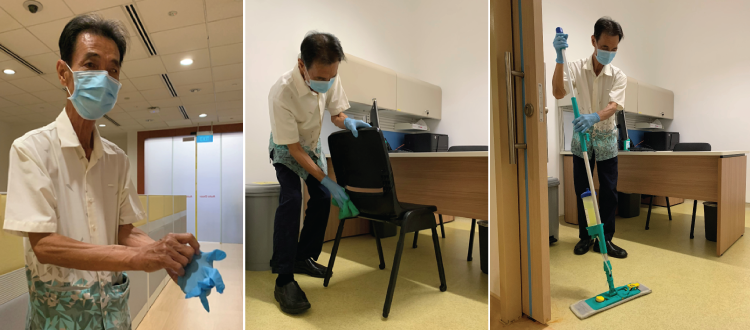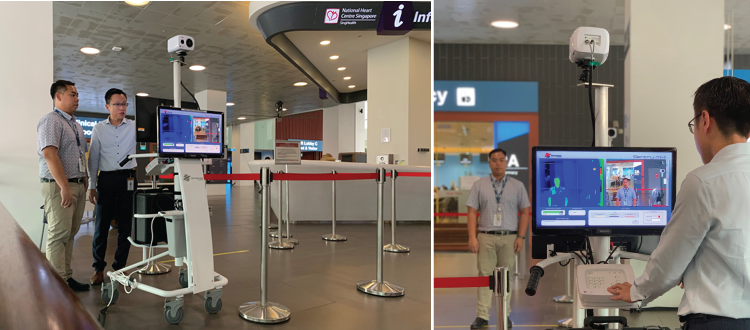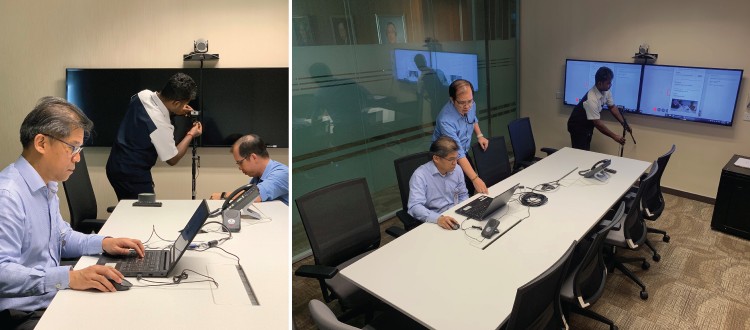Uncle Yong is the housekeeper in-charge of cleaning the isolation room at NHCS. Like him, many of our fellow colleagues are working behind the scenes to keep our patients and fellow colleagues safe amid this COVID-19 outbreak.
“Uncle Yong, aren’t you afraid?” I asked.
“Where’s there to be afraid of? Just do my job as usual,” he said with a smile.
Uncle Yong is the housekeeper in-charge of cleaning the isolation room at NHCS . Like him, many of our fellow colleagues have been and still are, working diligently behind the scenes to keep our patients and fellow colleagues safe amid this COVID-19 outbreak.
Keeping our surroundings clean
At present, patients and visitors who are found to have fever or respiratory symptoms at the visitor screening stations are directed to an isolation room where they are further assessed by a doctor. As part of infection control procedures, the isolation room is cleaned on a daily basis and the responsibility falls on 68-year-old Uncle Yong.

Uncle Yong cleans the isolation room daily. A thorough scrub down will be performed after the room was used, and even if the room was not used, a routine cleaning will still be carried out.
Besides Uncle Yong, all the housekeepers on duty at the different levels ensure high-touch areas are cleaned at stipulated times - lift buttons and railings at every two hourly, toilets at least twice daily and frequently touched areas like door knobs, flush buttons and toilet seats at every hour.
“The type of cleaning agents are in accordance to infection control practices, such as disinfectants for high-touch areas during this period of COVID-19,” shared Amy Toh, ISS Project Manager overseeing the housekeeping staff.
Detecting the right temperature
Brendan Teo and Bryan Liu from Biomedical Engineering (BME), Support Services, oversee one of the most critical equipment at the visitor screening stations – the Mass Fever Screening System, or known simply as temperature scanners.

The BME team ensures the temperature scanners are in good working condition twice a day - morning and evening, and even on Saturdays prior to the operation the visitor screening stations.
Brendan explained that there are two main components for the screening system – a camera unit and a temperature reference source (TRS). The screening system scans, identifies and tracks visitors’ temperature in a specified zone, and displays it on a monitor, “Cool temperatures show up as blue and green, while temperatures between 37 and 38 degree Celsius are reflected as yellow. Readings above 38 degree Celsius are in red, and will trigger an alarm and a graphic indication on the monitor,” shared Bryan. The alarm alerts the frontline checker to retake the temperature after the visitor has rested.
These screening equipment are critical tools supporting visitor screening process, and have to be maintained to ensure accuracy, “A slight move, for instance, someone accidentally kicked the scanner tripod could cause a misalignment of the camera and TRS. Even a mere 1 mm difference can affect the accuracy. When that happens, we will be called to troubleshoot.”
Helping us stay connected
Avoiding crowded areas limits the risk of one’s exposure to the coronavirus. Since February, large group gatherings and events have been cancelled, and many departments have been using alternative means to carry out their meetings.
Fortunately, the availability of video conferencing applications allow us to stay connected but it was not all easy for many of us who are not so tech-savvy. Thanks to our Support Services colleagues, Mark Lim and Anthony Goh, and staff from Maintenance Unit (MU) who have been assisting with the setup and troubleshooting of the web conference application.

Setting up a video conference meeting for the Department of Cardiology is a team effort.
“The majority of staff are not familiar with the web conference tools, hence upon requests, we help with the setup of meetings which include creating the meeting in the platform and setting up the laptop and camera, if needed,” shared Anthony.
Internet connection is required for a video conference and the quality of wireless connection makes a great difference in the conferencing experience. Anthony shared a tip “Instead of using WirelessSG which can be unstable, we would recommend using WirelessSGx. Though it requires you to register your mobile phone to the device, it offers better connectivity and less disruptions.”
